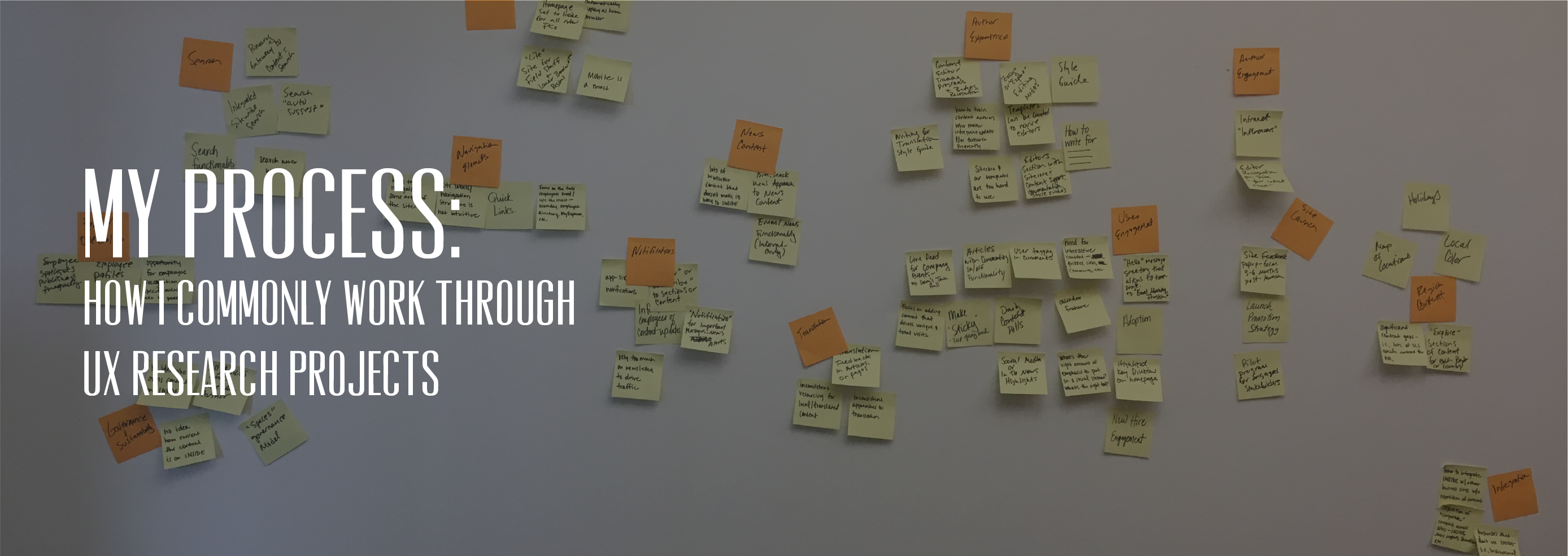
My goal as a professional is to uncover the ideal user experience, bring empathy into the forefront of design, and use design thinking methodologies to solve user problems in inventive ways.
I work with various companies to become more human-centered through qualitative and quantitative research.
 Throughout a project lifecycle, I work as the liaison to bring the user perspective to light. I am constantly attempting to weave in various methods to make sure digital services and experiences are user-focused.
Throughout a project lifecycle, I work as the liaison to bring the user perspective to light. I am constantly attempting to weave in various methods to make sure digital services and experiences are user-focused.
Before any research is done, I work with the team to help define what they need to know to create a successful project. The types of questions I ask myself are:
-
- What kind of research needs to be done?
-
- Who do we need to be talking to?
-
- How do we need to conduct the research?
-
-
- Would a quantitative or qualitative method fulfill the needs?
- Does research like this already exist? Are there any gaps our research can help fill in?
-

Depending on who, where, what, why, and how. I define a test plan. This includes what kinds of methods I propose based on the desired output of research, how many people we need to speak with, and where and when we need to speak with them. I usually try to do some form of audience definition, usually through proto-personas (i.e., hypothetical personas). A test plan, based on the chosen method, can also include interview questions, testing tasks, or research goals.
-
- What kind of output is this research going to inform?
-
-
- Who is the audience for this product/service?
- What type of unbiased and open-ended questions can I ask to effectively answer the questions the product team has?
-
 After the method is defined and the test plan approved, I either work closely with a recruiter or reach out to possible participants myself to schedule and run research sessions. Either way, both experiences require multi-tasking and careful planning.
After the method is defined and the test plan approved, I either work closely with a recruiter or reach out to possible participants myself to schedule and run research sessions. Either way, both experiences require multi-tasking and careful planning.
When recruiting, I want to make sure we are speaking with relevant users who represent the various user-types of a service or product. A product needs to work for all its users, not just one type of user. Being empathetic, to me, means telling a story from various perspectives to make sure products are as human-focused as possible.
Running research can sometimes be an information overload. But, my goal is to carefully document notes from interviews or observations, fix bugs on surveys when they come up, and record and archive sessions to go back and pull quotes from sessions when doing analysis.
As research is being collected, I have to think of multiple aspects at once based on the methodology being performed:
- What kind of pain points is the user experiencing?
- What kind of product or service are they interacting with?
- How do users currently try and solve issues?
- How is this pain point impacting the business?
- Do users prefer a specific service or experience over another?
Also, while the research is being conducted, I try and keep the design team or product owner looped in as much as possible. In my head, empathy comes from hearing the perspective first hand, so I usually encourage teammates and clients to sit in research sessions and hear feedback first hand.
 After all research is collected, it’s time to start translating the findings into actionable insights. Research is useless unless is can tell an effective story, and that any stakeholder or product team can run into the report, read it, and better understand the human perspective.
After all research is collected, it’s time to start translating the findings into actionable insights. Research is useless unless is can tell an effective story, and that any stakeholder or product team can run into the report, read it, and better understand the human perspective.
If I am doing more qualitative research, I tend to start with affinity diagramming. The research team and myself will documenting insights onto digital or physical sticky notes. Once all insights are out there, we organize those insights into relevant categories, name the categories, and then document digitally. These insights can help inform personas, interface design approaches, UX improvements, usability issues, or user journeys.
I then take these insights and apply them to a research findings document. The report and findings document tends to also include design recommendations, approaches, sitemaps, navigation structures, or content strategy (depending on the project). After I present the findings and make sure all of the questions are answered from the team, I usually lead some form of collaboration session to ideate ideal user experience or design approaches based on what we learned. This can be with the small content and UX team, or with a larger SCRUM team that includes developers and product owners.
After this, I am usually on the next project planning what other research insights we can uncover to make the best possible user experience and inform the wider vision of a company’s product approach.

-
- A/B Testing
- Affinity Diagramming
- Card Sorting
- Competitive Testing and Analysis
- Contextual Inquiry
- Customer Experience and Journey Mapping
- Desirability Testing
- Diary Studies
- Fly-On-The-Wall Observation
- Google Analytics Review
- Heuristic Evaluation
- Interviews
- Personas
- Service Blueprinting
- Shadowing
- Surveys
- Task-Analysis
- Tree Testing
- Unmoderated and Moderated Usability Testing
Request More Detail
Interested in more? Reach out to me at emilydallaire@gmail.com to request work samples.